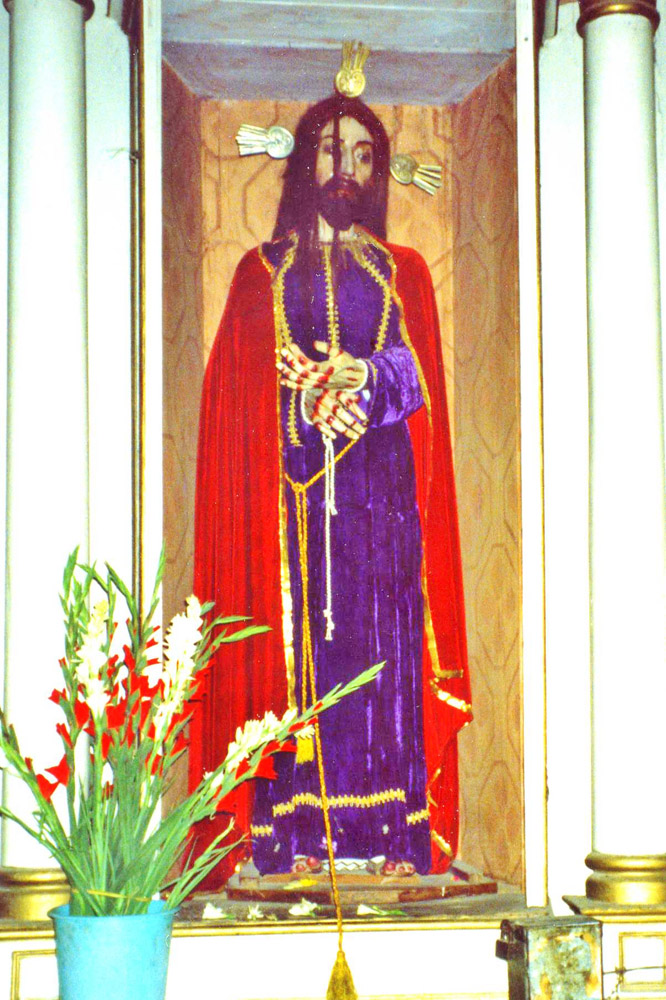Ecce Homo:
The figure stands on plain plank of wood.
It is not the work of a skillful artist. The hands are
outsized and the blood is represented symbolically by red
paint in stripes across the knuckles and joints of the
hands and the tips of the toes. But the flesh tones are
good, some veins are detailed, and the shaping of the face
is rather fine.
Basis for Identification: Standing
with hands tied, cruciform halo, blood, purple robe with
red cloak.
Site: Church of the
Assumption, Tlacolula.
Location: In a glass
case on a white and gold altar midway along the north
wall of the nave (see note).
Media and construction: Wood,
gesso, paint, fabric clothing. Eyes: carved, no lashes.
Hair: wig.
Size: About 5 feet (150 cm.)
Comparable santos in Oaxaca: Ejutla,
Etla (in the Soldedad
Group), Etla2,
Mitla, Santa Ana del
Valle, Tamazulapan,
Teitipac1,
Teitipac2,
Teitipac3,
Teotitlán,
Teposcolula,
Tilantongo, Xoxocotlán.
External Links:
The episode is in
John
19:1-5.
Wikimedia Commons: Statues of Ecce
Homo.
Next: A little farther along the north wall, a statue of Christ in a
coffin
Previous santo
Introduction
to Tlacolula
Santos Home Page
Note: On
this
site,
references to the cardinal directions always assume
that the main altar is at the east end of the church,
the narthex or entry area at the west end, and the two
walls
of the nave on the
north and south. (The
nave is the long central section.)
In the
case of the Chapel of the Lord of Tlacolula, which is
at right angles to the south wall of the church, the
altar is thus at the south end and the transept (the
two wings that give the building the shape of a cross)
comprises an east and west section. Actual
orientations may differ.
The photo shown here is licensed under the
Creative Commons Attribution-Share Alike 3.0 Unported
license. You are free to share or remix it on two
conditions: first, that you attribute it to the
photographers, Claire and Richard Stracke, without
implying any approval of your work on their part;
second, that if you alter, transform, or build upon
this photo, you may distribute the resulting work only
under the same or similar license to this one.
|


